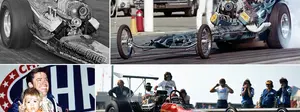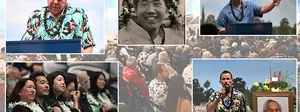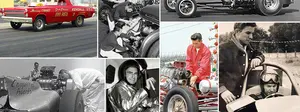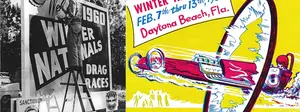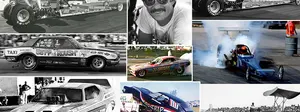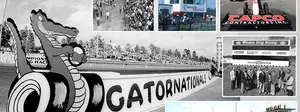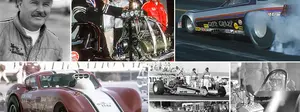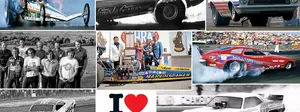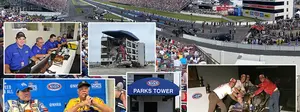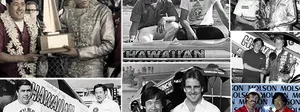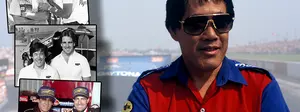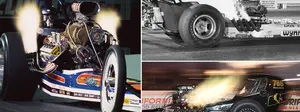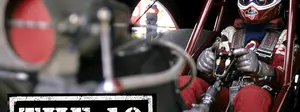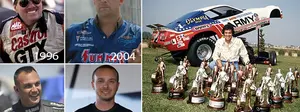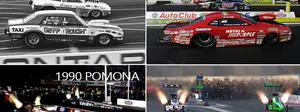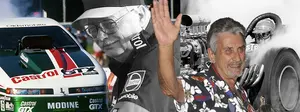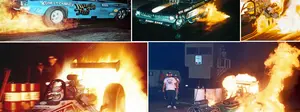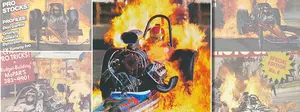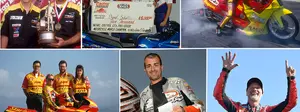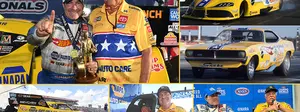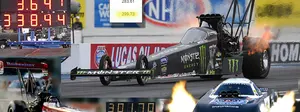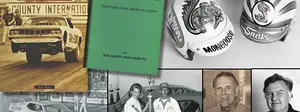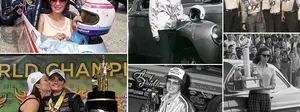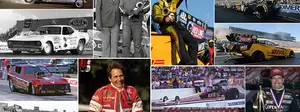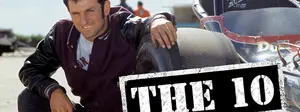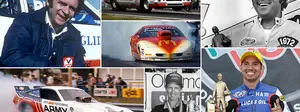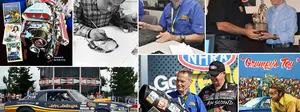Carol Cox: NHRA's first class winner
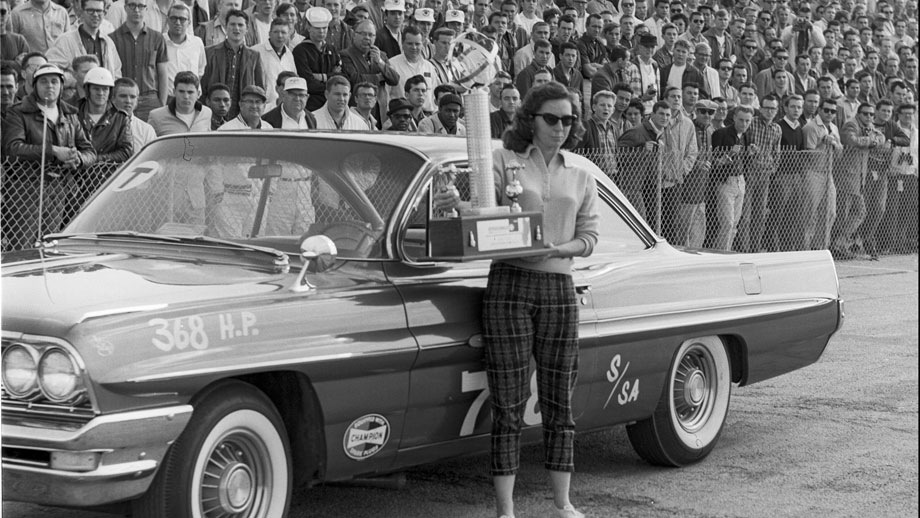
The names are familiar to most hardcore drag racing fans. Shirley Shahan: first female national event winner. Shirley Muldowney: first female Pro winner and champion. Amy Faulk: first female Sportsman world champ. Angelle Sampey: winningest female racer in NHRA history.
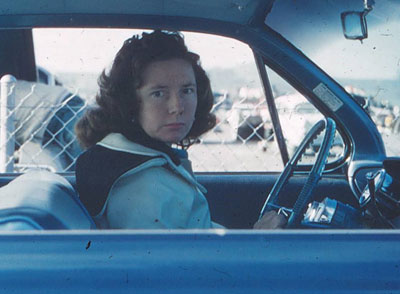 One name that isn’t as well known and should be is Carol Cox, a Whittier, Calif., homemaker who is the first woman to ever win a trophy of any kind at an NHRA national event. While most people know that Shahan won Stock Eliminator at the 1966 Winternationals -– becoming the first woman to win an NHRA national event eliminator -- few people are aware that four years earlier at The Big Go West, Cox won her class, S/SA, a feat she repeated months later on an even bigger stage, at the Nationals in Indianapolis.
One name that isn’t as well known and should be is Carol Cox, a Whittier, Calif., homemaker who is the first woman to ever win a trophy of any kind at an NHRA national event. While most people know that Shahan won Stock Eliminator at the 1966 Winternationals -– becoming the first woman to win an NHRA national event eliminator -- few people are aware that four years earlier at The Big Go West, Cox won her class, S/SA, a feat she repeated months later on an even bigger stage, at the Nationals in Indianapolis.
NHRA is celebrated today as the motorsport of diversity, where women not only routinely compete but win not only events but also championships. They’re celebrated and saluted, publicized and praised, but it wasn’t always that way.
Just a year before Cox’s breakthrough, women weren’t even allowed to compete at NHRA national events. Women had been competing at local tracks for years -– often in a “Powder Puff" class -- but weren’t allowed on the big stage of a national event. Maybe it was just the times. In 1961, a woman couldn’t even get a credit card in her name if she were single and a married woman had to have her husband co-sign for it. They couldn’t even serve on juries.
Women, in the minds of some, were expected to be more like TV’s June Cleaver, home making sure that Ward’s shirts were always pressed and “the Beaver” and Wally were doing their homework. The most scandalous thing they might do was sneak a smoke in the backyard. They certainly weren’t supposed to be winding it up and blowing it out on the dragstrip. Maybe NHRA, already successful though still fragile, imagined their world’s worst scenario of a woman getting injured or killed on the dragstrip and the headlines and horror it would bring. I don’t know, and there’s hardly anyone left to ask.
But Carol Cox and other women, including Shahan, Roberta Leighton, Paula Murphy, and Barb Hamilton, had other ideas -– and the support of some forward-thinking men -- that helped break that stereotype.
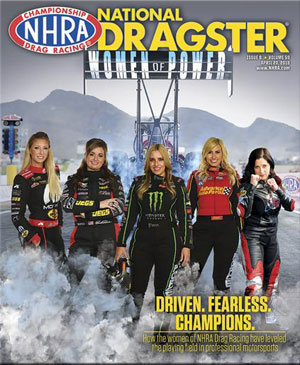 A couple of weeks ago, National Dragster published a special issue, titled Women of Power, that saluted the long history of female racers and their accomplishments and contributions to the sport.
A couple of weeks ago, National Dragster published a special issue, titled Women of Power, that saluted the long history of female racers and their accomplishments and contributions to the sport.
We chronicled a lot of the groundbreaking female racers, from Shahan to Muldowney, from Murphy to Brittany Force. We had timelines and feature stories and stats and lists of the women who have contributed -- and continue to contribute -– to NHRA’s unparalleled gender diversity. It was extremely thorough and well received but, in retrospect, I wish we had included Carol Cox’s accomplishment. Carol is 90 now, still alive but suffering from dementia, but her son, Steve, a successful racer in his own right, is leading the charge to make sure that her milestone is not forgotten. We traded some emails and spent some time on the phone this week talking about his mom.
 There’s no doubt that Cox was NHRA’s first female class winner. It’s right there, on page 9 of the March 9, 1962 issue of National Dragster. There’s a photo and one 51-word paragraph acknowledging her win. It refers to her the sport’s “champion powder puff handler” but never once mentions that this is an historic feat. (It does, however, mention that she was a crowd favorite.) I’m not sure if this was underplayed on purpose or that the editors –- directed then by Wally Parks himself -– thought it was an aberration instead of a sign of things to come, but it’s nonetheless shocking, in retrospect, to look back at their missing a moment.
There’s no doubt that Cox was NHRA’s first female class winner. It’s right there, on page 9 of the March 9, 1962 issue of National Dragster. There’s a photo and one 51-word paragraph acknowledging her win. It refers to her the sport’s “champion powder puff handler” but never once mentions that this is an historic feat. (It does, however, mention that she was a crowd favorite.) I’m not sure if this was underplayed on purpose or that the editors –- directed then by Wally Parks himself -– thought it was an aberration instead of a sign of things to come, but it’s nonetheless shocking, in retrospect, to look back at their missing a moment.
When Shahan won the Winternationals four years later, she was on the front page of National Dragster but, then again, it was four years later. The Civil Rights Act had been signed in 1964, barring discrimination in employment on the basis of race and sex, and the Equal Employment Opportunity Commission had been created to further level the gender playing field.
For the uninitiated, winning class –- where you compete against other cars with similar horsepower-to-weight combinations in your classification –- as Cox did, is different from winning the eliminator –- where you race against every other car entered in the event, regardless of class –- as Shahan did, but I’ll tell you that even today there are scores of racers who take more pride in a class win than an eliminator win because it means that they did the best job of working within the same rules as other cars in their class and beat them heads-up, versus racing handicap-style in the overall eliminator. The trophies are different but the accomplishment is still remarkable .
Not unlike Shahan’s story, Carol Cox was a mother of young children who did all the right mom things while earning a name for herself racing locally alongside her husband, then had her moments on the national stage.

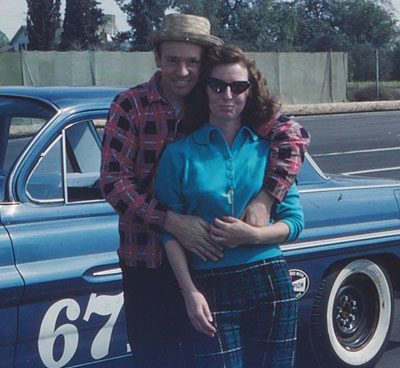 Cox’s husband, Lloyd, was an engineer, supremely mechanically inclined, and a good enough racer in his own right to earn a sponsorship from a local Oldsmobile deader. Carol came with him to the races and, at the famed Santa Ana Drags, she was befriended and encouraged by Peggy Hart (pictured above with Cox), who was not only the wife of track manager C.J. “Pappy” Hart, but also a talented driver and, arguably, NHRA’s first female star. Before long, Carol was behind the wheel and wasted no time racking up race wins and trophies.
Cox’s husband, Lloyd, was an engineer, supremely mechanically inclined, and a good enough racer in his own right to earn a sponsorship from a local Oldsmobile deader. Carol came with him to the races and, at the famed Santa Ana Drags, she was befriended and encouraged by Peggy Hart (pictured above with Cox), who was not only the wife of track manager C.J. “Pappy” Hart, but also a talented driver and, arguably, NHRA’s first female star. Before long, Carol was behind the wheel and wasted no time racking up race wins and trophies.
In 1958, Lloyd traded in their Olds for a new Pontiac but fought transmissions issues with the Hydramatic unit from the factory. Lloyd took night classes to learn about transmissions and became so adept at repairing and improving his transmissions that he eventually opened up a transmission shop.
The Coxes raced a lot at fabled Lions Dragstrip, run then by famed motorsports guru Mickey Thompson, whose early cars were all Pontiac-powered. Eventually, Lloyd went to work for Thompson, who greatly aided their careers and causes.

In early 1961, Lloyd ordered a new Pontiac Ventura with a 348 tri-power setup. Lloyd was friends with Doug Thorley, who whipped him up a set of headers for the car, which also featured prototype Lakewood 90/10 front shock absorbers. The car not only raced, but was driven back and forth to the track, to boot.
 By late 1961, they felt good enough about their car and their skills that they headed east to Indy for the prestigious Nationals. Back then there was no official required pre-entry like there is today, but when the Coxes showed up at Indianapolis Raceway Park, they ran headlong into the association’s iron-clad rule prohibiting women from competing at its national events. Lloyd ran the car that year, but Carol was determined to right the wrong.
By late 1961, they felt good enough about their car and their skills that they headed east to Indy for the prestigious Nationals. Back then there was no official required pre-entry like there is today, but when the Coxes showed up at Indianapolis Raceway Park, they ran headlong into the association’s iron-clad rule prohibiting women from competing at its national events. Lloyd ran the car that year, but Carol was determined to right the wrong.
When she returned home, she got to work.
“Mom started a big campaign to get this changed,” recalls Steve, who was 13 at the time. “She contacted every Tom, Dick, and Harry she could think of to help her race. She called the L.A. Times and the Herald-Examiner [newspapers] -– my grandmother and grandfather had both worked at the Examiner, so she knew people -- and even called our local congressman. She got hold of a TV network -– I don’t remember which one -– but they came out to Lions and filmed her racing, and she even won that day.”
Carol's hard work, along with the influential support of Thompson, all paid off when NHRA informed the Coxes in early 1962, that Carol could compete at the Winternationals. (Carol was not alone in this crusading; as you will read below, Roberta Leighton was waging a similar campaign on a different front.)
“I’ll never forget when she won the Winternationals,” said Steve. “She came to my school, Sierra High, in the car and picked me up early. We drove to Pomona and got the car teched while Dad was at work. It was amazing. After she won, the local newspapers came to our house and our phone didn’t stop ringing.”
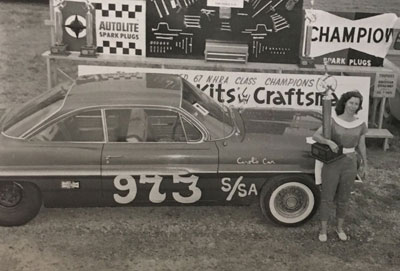 After Carol won the Winternationals class title, later that year she and Lloyd loaded the car, along with some of Thompson’s other cars, including a Hayden Proffitt-built A/FX Tempest that Lloyd would drive, onto a car hauler for the long trek back east to the Nationals. Carol became the first woman to score a win of any kind at the Nationals and Lloyd won the A/FX class, marking another first.
After Carol won the Winternationals class title, later that year she and Lloyd loaded the car, along with some of Thompson’s other cars, including a Hayden Proffitt-built A/FX Tempest that Lloyd would drive, onto a car hauler for the long trek back east to the Nationals. Carol became the first woman to score a win of any kind at the Nationals and Lloyd won the A/FX class, marking another first.
The first-generation Cox racing story ended not long after. Carol was sick with the flu for the 1963 Winternationals, so Lloyd drove. Although he won class and set a record with the car, nudging it into the 12s for the first time, the car was sold a week later.
So what happened?
“I don’t know why, but people were always accusing my mom of cheating,” said Steve. “I cannot tell you how many times that car got torn down. My dad always carried extra sets of gaskets with him. One time [NHRA national tech director Bill] ‘Farmer’ Dismuke even took the camshaft with him and had Ed Iskenderian and other camshaft manufacturers check it out and, of course, it was legal. Dad finally got tired of all the headaches, and we got into motorcycle racing after that. My mom was very unhappy, but it turned out to be a good thing for our family.”
 Today, Steve carries on the family legacy in his 10-second ‘68 Camaro bracket car and his daughter, Crista, raced in Jr. Dragsters in the early 1990s, but his main goal in racing continues to be making sure that his mother, no longer able to speak for herself, gets her due.
Today, Steve carries on the family legacy in his 10-second ‘68 Camaro bracket car and his daughter, Crista, raced in Jr. Dragsters in the early 1990s, but his main goal in racing continues to be making sure that his mother, no longer able to speak for herself, gets her due.
“This is a very big deal for my family,” he said. “My mom actually still has a lot of fans – just look at my Facebook page – and it feels really good to get her accomplishments acknowledged like this.”

As mentioned earlier in this column, Carol Cox did not fight the good fight alone. Roberta Leighton, whose family were members of the Dust Devils car club that ran Inyokern Dragstrip in Southern California’s high desert, was another accomplished female racer of the era, also fighting for the right to compete at national events. Her husband, Robert (better known as Gus), was an official in many sanctioning bodies, including the SCTA, and Roberta was the sister of Phylis “P.J.” Partridge, who was married to future NHRA Vice President and prominent racer Bernie Partridge, who was already close to NHRA founder Wally Parks. Those contacts obviously helped.
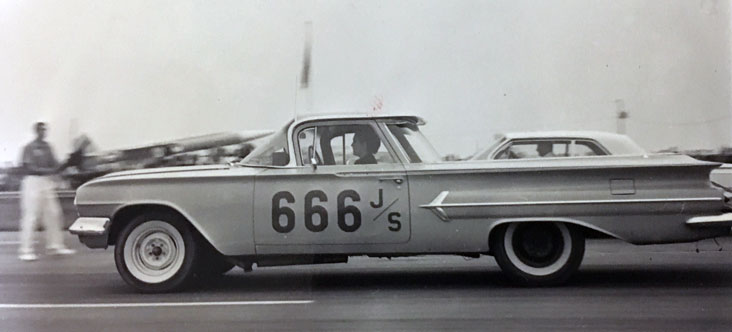
I’m not sure if Leighton raced at the ’62 Winternationals but she did run Indy that year and, like Carol Cox, won her class, J/S, in a ‘60 El Camino. I spoke to her son, David, earlier this week about his mom’s efforts. He still owns the El Camino as an ongoing tribute to her accomplishments and dreams of returning it to the track.
“My mom started racing in 1952, and she and dad were always talking to [NHRA competition director] Jack Hart and having him come out to watch her race,” he recalled. “It seems like every step the women took they had to get approved to do it. Dad could have jumped into the car and driven it all day long, but a woman pretty much had to be blessed with Holy Water to do it.”
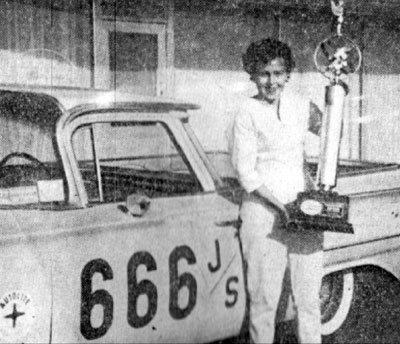 After her Indy win, she converted the El Camino to an alcohol-injected powerplant and, in 1963, Leighton became the first female licensed to drive in NHRA’s Gas classes; a short while later, Barbara Hamilton became the first woman licensed to drive a supercharged gasser.
After her Indy win, she converted the El Camino to an alcohol-injected powerplant and, in 1963, Leighton became the first female licensed to drive in NHRA’s Gas classes; a short while later, Barbara Hamilton became the first woman licensed to drive a supercharged gasser.
Leighton’s racing career was put on hold when she suffered third-degree burns to her legs in a house fire in late 1963. Fortunately for her, the dragstrip is situated close to the U.S. Naval base at China Lake, and the doctors there helped perform a lot of pioneering skin-graft surgeries to reconstruct her ankles. “Otherwise, she probably never would have walked again, let alone raced,” said David.
After her return in 1965, Leighton competed in NHRA class competition through 1978, then bracket raced for 12 years, served as a track official at many national, divisional, and local races, and played a major role in the operation of Inyokern. She passed away Nov. 15, 2002.
“My mom was always proud that she was part of a being a female pioneer that helped open the door for other women," David told me. "There was a lot of camaraderie between the women of that era -– she and Shirley [Shahan] were good friends -– and each one of them was trying to do more to open the next door.”
Every woman today owes a debt of gratitude to women like Carol Cox and Roberta Leighton, Barbara Hamilton, Shirley Shahan, Shirley Muldowney, Paula Murphy, and many more for getting us to where we are today.
Phil Burgess can reached at pburgess@nhra.com


